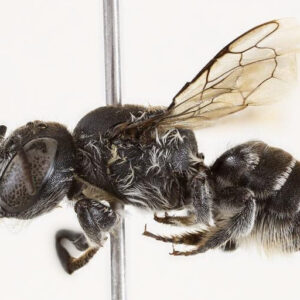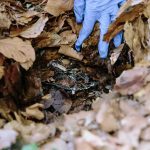Scientists discover devil-horned bee species while studying critically endangered australian plant

A chance encounter during a plant conservation survey has led to the discovery of a remarkable new bee species with an equally remarkable name. In 2019, researcher Kit Prendergast was studying insects that pollinate rare plants in Western Australia’s Bremer Ranges when she spotted an unusual native bee with distinctive horn-like projections on its face.
The newly identified species, officially named Megachile lucifer, gets its dramatic moniker from the female’s striking facial features. “The female had these incredible little horns on her face,” explained Prendergast, the study’s lead author from Curtin University. The name was also inspired by her Netflix viewing habits at the time – she was watching the show “Lucifer” while writing up the species description, making the connection an easy choice.
What makes this discovery particularly significant is the bee’s relationship with endangered flora. Prendergast found M. lucifer visiting flowers of Marianthus aquilonaris, a critically endangered plant species, as well as the more common wandoo mallee eucalyptus. Both plants exist only in Western Australia, highlighting the interconnected nature of the region’s unique ecosystems.
The discovery process involved careful detective work, including comparing specimens with museum collections and conducting DNA barcoding tests, which confirmed no match with known species. Interestingly, while female M. lucifer sport their devil-like horns, males of the species lack these dramatic features entirely – an unusual reversal of typical animal kingdom patterns where males are more likely to display prominent physical characteristics. This find underscores how much we still don’t know about biodiversity, even in well-studied regions.
This article was written by the EnviroLink Editors as a summary of an article from: Mongabay







